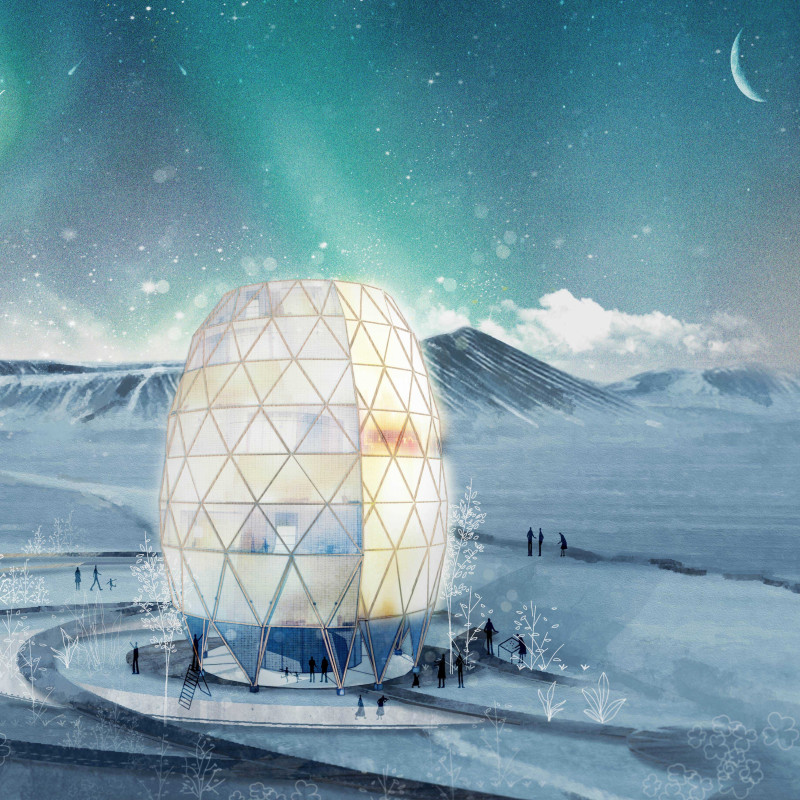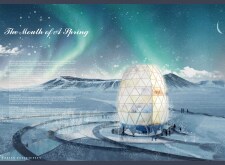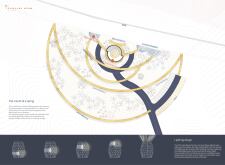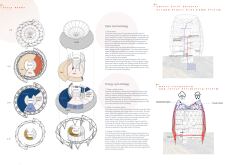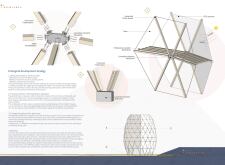5 key facts about this project
"The Mouth of A Spring" is an architectural design that showcases the relationship between natural features and built environments. Located on the boundary between the Eurasian and North American tectonic plates, it serves as both a landmark and a community hub. The design is inspired by the idea of a hot spring, which influences its form and structure. The project emphasizes a connection to the natural world and seeks to create a vibrant space for visitors.
Conceptual Framework
The design concept revolves around the metaphor of a spring. This is reflected in the building's shape, which suggests movement and emergence from the ground. The structure is divided into east and west sections, characterized by glass facades that provide a clear view and help illuminate the interior. Different colors in the membrane structures symbolize the geographical divide, enriching the visual experience and guiding people through the space.
Spatial Organization
Open social spaces are central to the layout, encouraging interaction among visitors. High ceilings and expansive areas allow natural light to flood these spaces, making them feel bright and welcoming. The use of ETFE membrane technology on the exterior permits light to penetrate while creating a connection with the surrounding landscape. This arrangement fosters a community atmosphere, making it a suitable venue for different gatherings.
Sustainability Initiatives
Sustainability plays a significant role in the building's function. A geothermal energy system is in place to harness underground heat, supplying electricity and hot water. This makes the design not only efficient but also environmentally friendly. The project captures rainwater and melting snow through a water collection system, filtering it for reuse. These practices contribute to minimizing the environmental impact of the building.
Material Selection
Local timber is used for the main and internal structures, supporting sustainability by reducing transportation emissions. This choice also strengthens the building's connection to its natural surroundings. The external ETFE membranes add another layer of functionality, offering both insulation and transparency. They help regulate temperature while allowing visibility to and from the outdoors.
The design culminates in a narrative that reflects the spirit of the natural spring. It fosters engagement between users and the landscape, creating an environment where architecture and nature coexist harmoniously.


